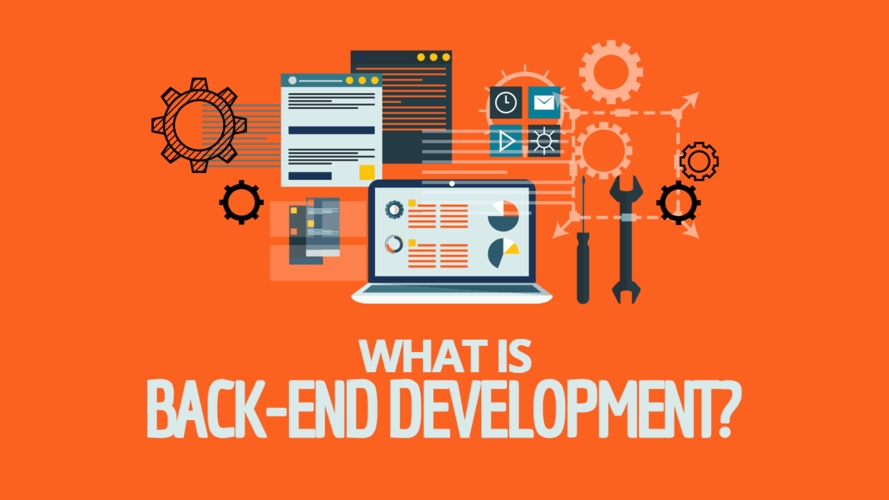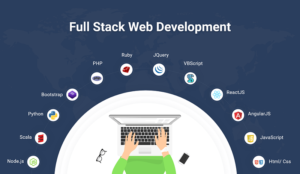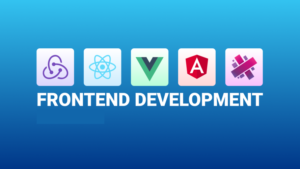Introduction
Back-end development is the engine that powers websites and applications, ensuring they run smoothly and securely. While front-end developers focus on what users see, back-end developers handle the behind-the-scenes processes that make websites functional. This guide will help you understand what back-end development entails and how you can master it to build robust and scalable applications.
What is Back-End Development?
Back-end development involves working on the server side of web applications. It ensures that data flows smoothly between the front-end (user interface) and the database.
Key Components of Back-End Development:
- Server: Handles requests and responses (e.g., Node.js, Apache).
- Database: Stores and retrieves data (e.g., MySQL, MongoDB).
- APIs: Bridges communication between the front-end and the back-end.
Examples of Back-End Development in Action:
- User Authentication: Ensuring only authorized users can access certain parts of a website.
- E-Commerce Websites: Processing orders, managing inventory, and handling payments.
- Social Media Platforms: Storing and retrieving user-generated content like posts and messages.
Why Choose Back-End Development?
- High Demand: Back-end developers are essential for building scalable and secure applications.
- Diverse Opportunities: Work on APIs, cloud-based systems, and large-scale data processing.
- Competitive Salaries: Back-end developers are among the highest-paid tech professionals.
Industry Insights:
- Back-end development roles include Software Engineer, API Developer, and Database Administrator.
- According to Glassdoor, the average salary for a back-end developer in the US is around $100,000 per year.
Key Skills for Back-End Developers
To succeed as a back-end developer, you need to master certain programming languages, frameworks, and tools.
Programming Languages:
- Python: Known for its simplicity and versatility (e.g., Django, Flask).
- JavaScript (Node.js): Ideal for full-stack development.
- Java: Popular for large-scale applications.
- Ruby: Often used with the Ruby on Rails framework.
- PHP: Widely used for web development.
Frameworks and Libraries:
- Express.js: Lightweight Node.js framework for building APIs.
- Django: Python framework for rapid development.
- Spring Boot: Java-based framework for creating enterprise-level applications.
Databases:
- Relational Databases: MySQL, PostgreSQL.
- NoSQL Databases: MongoDB, Cassandra.
Version Control:
- Git: To manage and track code changes.
- GitHub/GitLab: To collaborate with other developers.
Server and Deployment:
- Familiarize yourself with hosting services like AWS, Heroku, and DigitalOcean.
- Learn containerization tools like Docker and Kubernetes.
How to Start Your Journey as a Back-End Developer?
1. Learn the Basics:
- Start with a programming language like Python or JavaScript.
- Understand how servers and databases interact.
2. Explore Online Courses:
- The Complete Node.js Developer Course – A hands-on course for beginners.
- CS50’s Web Programming with Python and JavaScript – Covers back-end basics using Django.
- The Odin Project – Free, structured learning resources for back-end development.
3. Build Small Projects:
- Create a simple API to manage a to-do list.
- Build a blog platform with user authentication.
- Develop a RESTful API for managing book data.
4. Understand Databases:
- Learn how to design and manage databases using MySQL or MongoDB.
- Practice writing SQL queries to retrieve and manipulate data.
5. Learn Frameworks:
- Choose a framework based on your preferred language (e.g., Django for Python, Express.js for JavaScript).
- Work on projects to solidify your understanding.
6. Practice Deployment:
- Host your projects on platforms like Heroku or AWS.
- Set up CI/CD pipelines for smooth deployment.
A 6-Month Roadmap to Back-End Development
Months 1–2: Programming Fundamentals
- Learn Python, JavaScript, or Java.
- Understand HTTP, RESTful APIs, and basic database operations.
Months 3–4: Databases and Frameworks
- Master SQL for relational databases and MongoDB for NoSQL.
- Work with frameworks like Express.js or Django to build web applications.
Months 5–6: Advanced Topics and Deployment
- Explore authentication techniques (e.g., OAuth, JWT).
- Practice deploying applications to platforms like Heroku or AWS.
- Build a portfolio project like an e-commerce backend or a social media API.
Recommended Resources
Books:
- “Flask Web Development” by Miguel Grinberg: A beginner-friendly guide to Python Flask.
- “Node.js Design Patterns” by Mario Casciaro: A deep dive into scalable backend architecture.
Free Learning Platforms:
- FreeCodeCamp – Backend development tutorials.
- W3Schools – For learning SQL and basic backend concepts.
YouTube Channels:
- Traversy Media: Tutorials on Node.js, Express, and Django.
- The Net Ninja: In-depth tutorials on backend frameworks.
Tools Every Back-End Developer Should Know
- Postman: For testing APIs.
- Docker: For containerization and deployment.
- NGINX: A powerful web server for managing requests.
- Redis: For caching and improving app performance.
Conclusion
Back-end development is the backbone of any application. By mastering programming languages, frameworks, and tools, you can build robust systems that power modern web and mobile applications. With practice, dedication, and continuous learning, you’ll be ready to tackle exciting challenges in the field of back-end development.
Are you ready to start your back-end development journey? Share your thoughts or questions below, and let’s get started!




